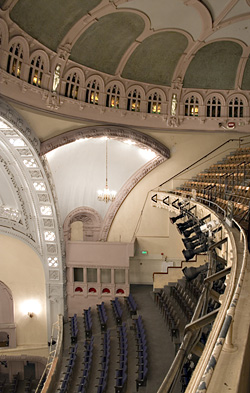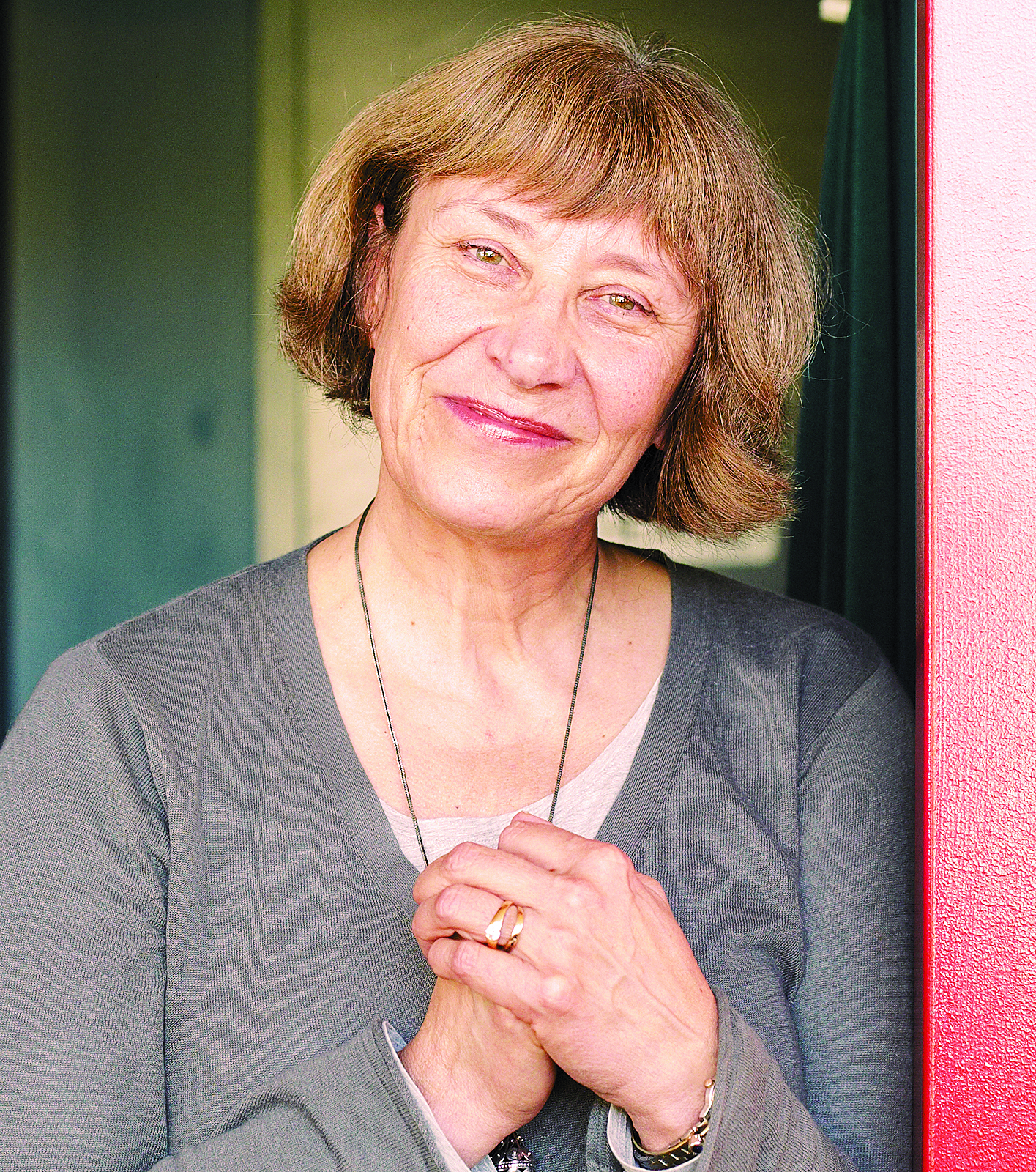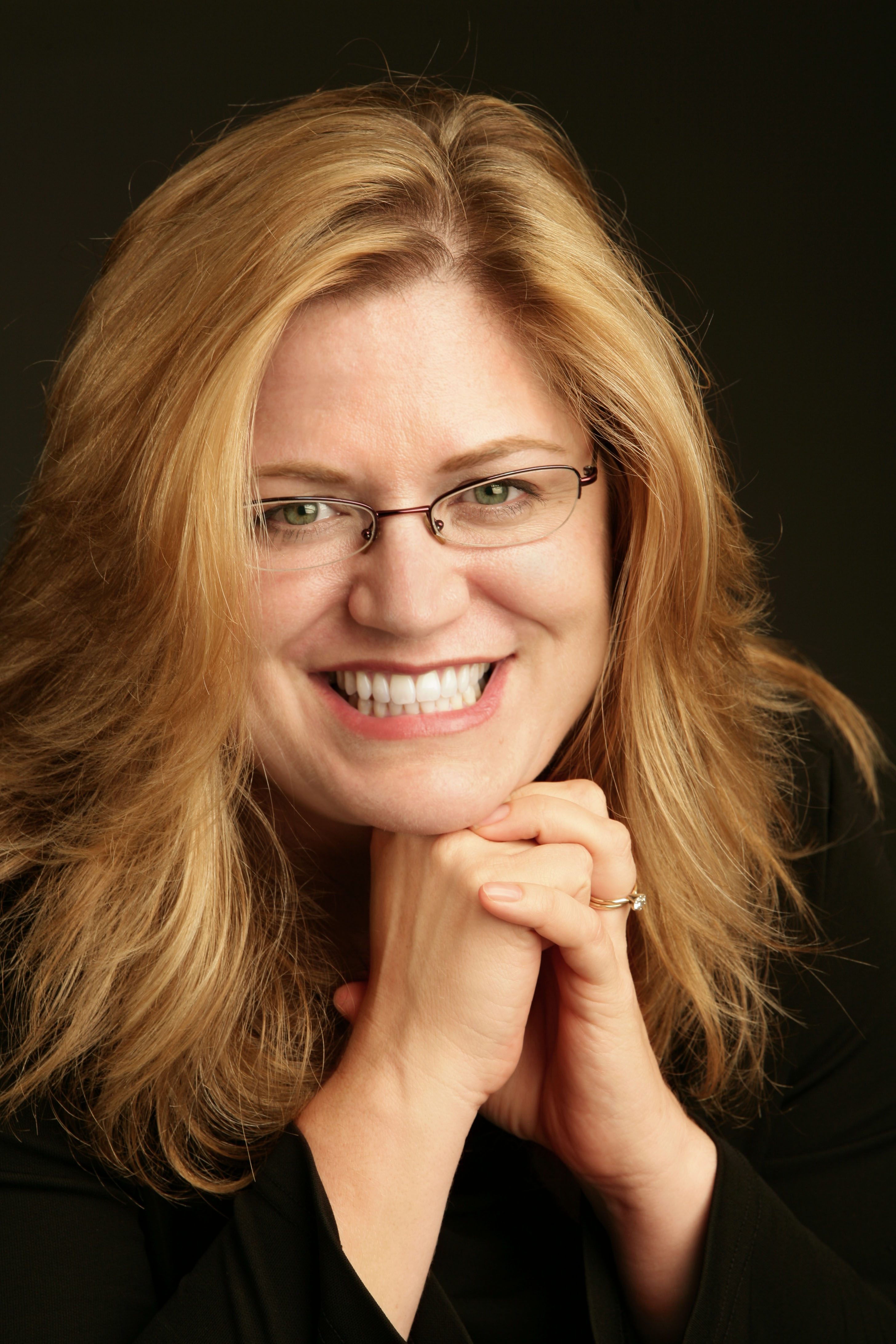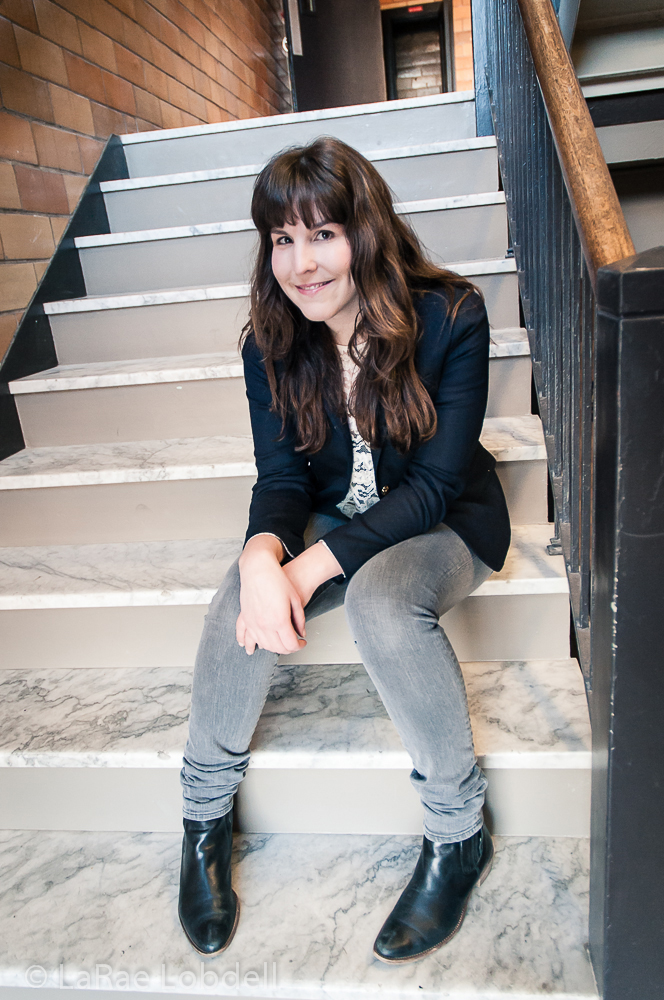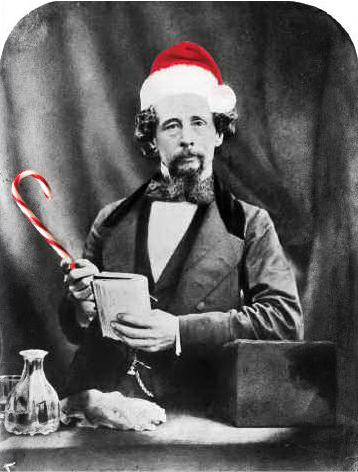Back in 2000, I got a commission from the Seattle Theatre Group (STG, which operates both the Moore and Paramount theaters) to create a project about the Moore’s vaudeville history. I hired a group of artists, and STG gave us a modest budget and complete run of the theater for three weeks, during which time we devised a script, rehearsed it, and gave a single performance. We explored the lobby, the flies, the dressing rooms, and the weird little box seats on each side of the stage. We rehearsed in the bar and sat in the top gallery, peering at the statues of the Muses in their grimy and paint-peeled glory. We found a side room filled with old theatrical trunks, and appropriated them as props. Somewhere in the middle of all of this, everyone in the company fell in love with the place, and the finished show was a billet-doux to its atmosphere and its history.
A whole lot of people love the Moore—which turns 100 years old on Dec. 28—despite the peeling paint and worn carpets. The throngs at the recent open house included an eclectic cross section of Seattle’s artists, art funders, and artistic directors, who knocked back a couple of glasses of free wine, munched on some snacks, and wandered all around the theater, much as my small company had been privileged to do seven years ago. While partygoers congregated in corners and talked, down on the stage Kevin Joyce gamely emceed a vaudeville-inspired evening of eclectic performance, everything from opera to blues, from trapeze work and vaudeville sketches to a finale featuring a house band including members of Sirens Sister, the Presidents of the United States of America, and special guests that included STG artistic director Josh LaBelle on drums.
While evocative of vaudeville, the Moore’s actual history as a vaudeville house was brief. It was part of the Orpheum Circuit from 1917 to 1919 during the genre’s declining days. The building’s original plans called for something classier than such ragtag entertainment. On opening day in 1907, an audience of 3,000 people (600 more than its listed capacity) watched the comic operetta The Alaskan. This Yukon-themed musical was written and performed by Seattle artists, and actually made it to Broadway sometime later—and promptly disappeared into obscurity. (A story repeated many times since!) The Moore also was one of the first homes of the Seattle Symphony.
The oldest surviving theater in Seattle, the Moore is 21 years older than its sibling, the glamorous Paramount, a few blocks away at Ninth and Pine. By the ’70s both theaters were run-down and destined for the same wrecking ball that claimed such glorious theaters as the Orpheum (at Fifth and Stewart) and the Fox Musical Hall (at Seventh and Olive), while only the exquisitely preserved husk of the Coliseum, which now houses Banana Republic, remains.
But while the Paramount got a multimillion-dollar renovation in 1994 thanks to philanthropist Ida Cole, the Moore’s not been so lucky. STG operates the theater but doesn’t own it—and the current owners, who also own the Moore Hotel, aren’t interested in an expensive refurbishment.
While it’s disappointing that the Moore hasn’t had a millionaire benefactor, it’s hard to resist its shabby glory. Unlike the Paramount and the 5th Avenue, it was designed principally for live performance, not film. The acoustics of the space are superb (several performers at the birthday bash were unmiked, and I had no trouble hearing them above the party chatter), and though the upper gallery (the “cheap seats” originally for blacks and other minorities) is vertiginous, once you’ve sat down, the vertical climb makes the stage below feel downright intimate. The main balcony is supported with huge girders from beneath, an innovation that eliminated the pillars of other large houses—there’s not a seat in the house with bad sight lines.
The list of live performers and companies who’ve played its stage is a history of American show business. In its first 30 years, the Moore featured Sarah Bernhardt, Harry Houdini, Sophie Tucker, Fats Waller, Martha Graham, Arthur Rubenstein, Charlie Parker, and Paul Robeson, among many others. Jack Benny followed the Marx Brothers on the bill in 1920, and reminiscing later, said that Seattle was where he first found confidence as a solo performer. (How would you like to try following the Marx Brothers?)
The ’50s were somewhat lean, but music stars predominated in the ’60s and ’70s, everyone from Joan Baez and Bob Dylan to Pink Floyd and the Who’s Tommy (with Bette Midler as the Acid Queen!). The ’80s were bleak again, but in 1989 there was “Lamefest,” when grunge grew up and Nirvana played their first large gig.
Since STG took over in the early ’90s, they’ve primarily stuck to music programming, but there have been some inspired theatrical events as well, including The Vagina Monologues, Shockheaded Peter, and my own personal favorite, Robert Lepage’s sublime Far Side of the Moon, a tour-de-force solo spectacle with a stage-length revolving mirror as the set.
Back in 2000 when we staged our show, we sat the audience on the stage with us and closed the curtains behind them at the top of the evening. Mid-show as our “big effect,” we opened the curtains, revealing the house in its fully lit glory. Despite the crumbling plaster, the dirt, and the peeling paint, it took their breath away. It still does the same thing to me.
